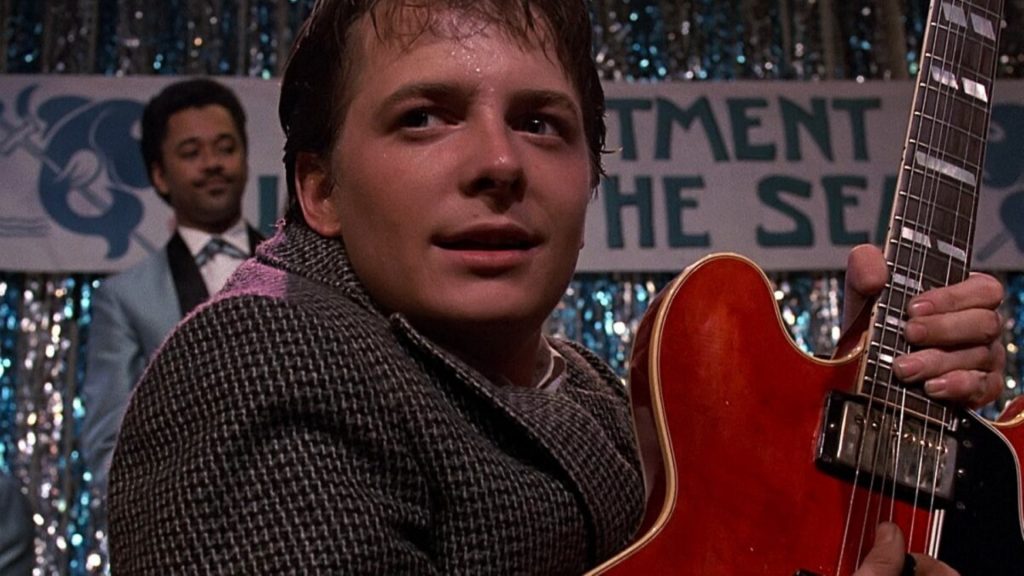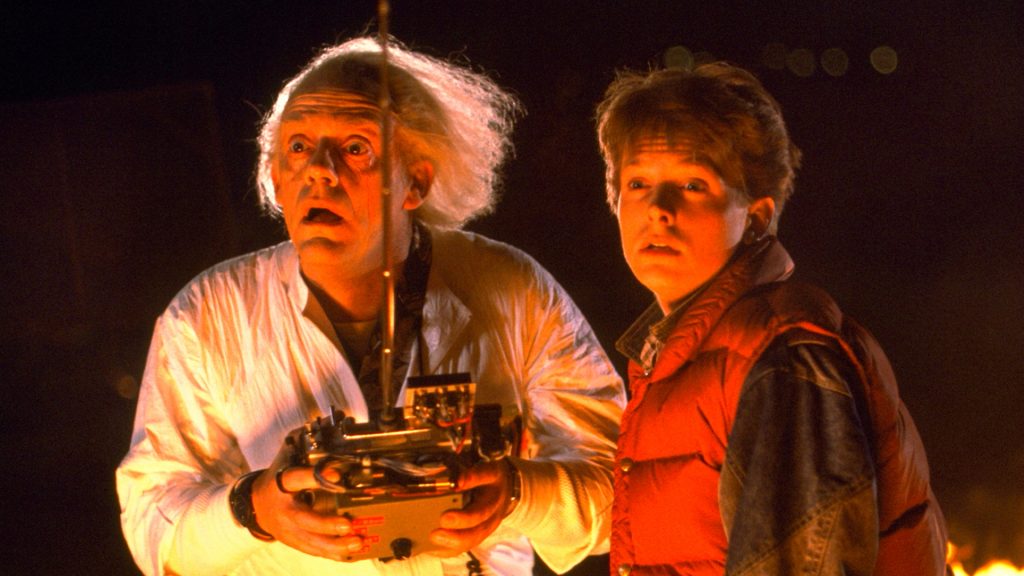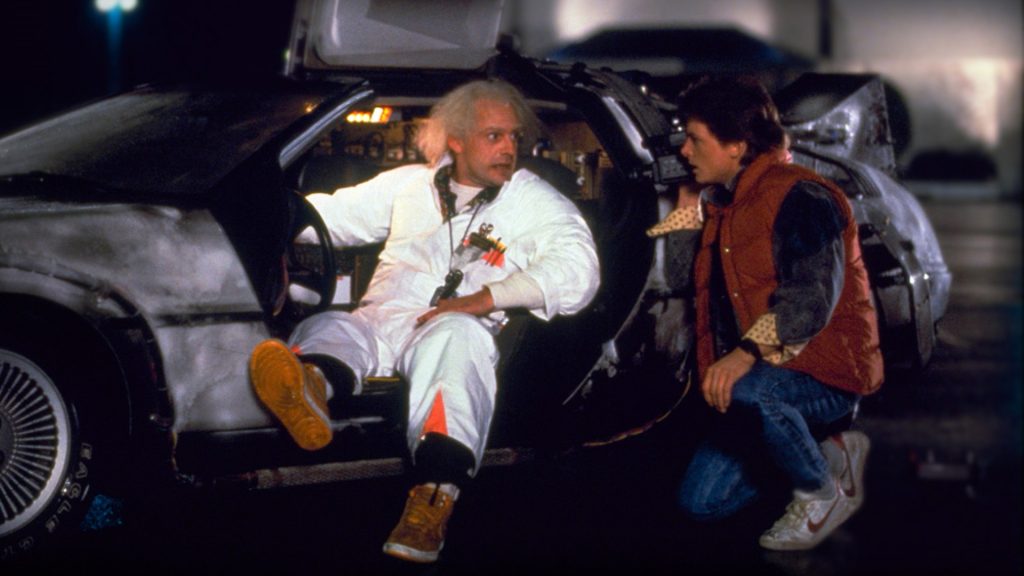Back to the Future is a science fiction comedy adventure film directed by Robert Zemeckis and written by Zemeckis and Bob Gale. It received generally positive reviews from critics when it came out in 1985, and went on to spawn a trilogy, becoming a classic franchise in the years to follow.
The film stars Michael J. Fox as Marty McFly, Christopher Lloyd as Dr. Emmett Brown, Lea Thompson as Lorraine Baines McFly, Claudia Grace Wells as Jennifer Parker, Billy Zane as Match and Thomas Wilson as Biff Tannen. The film won an Oscar in the 1986 US Academy Awards in the category of Best Effects, Sound Effects Editing, and was also nominated for Best Writing, Screenplay Written Directly for the Screen, as well as Best Sound and Best Music, Original Song. That same year, it was nominated in four separate categories at the Golden Globes, and five categories at the BAFTA Awards.
Back to the Future follows Marty McFly, an ordinary teenager living with his parents. Marty’s family is far from perfect, with distant siblings, an alcoholic mother and an underperforming father who is bullied by his boss, Biff. On an unrelated note, Biff really does sound like the name an antagonist would have, doesn’t it? Yet despite his family’s daily troubles, Marty has a dream to become a musician. One night, he tells his girlfriend Jennifer about his fear of growing up to become like the rest of his family, and he meets with his old friend Dr. Emmet Brown right after.

Emmet Brown is an aging scientist who invents a time machine, which becomes the plot’s primary driving force. And because of his great taste, Doc installed this machine into a DeLorean, a two-door sports car that gives off 80’s vibes like nobody’s business. The likable old man looks vaguely like Albert Einstein and likes saying “Great Scott!”, which he does whenever given the chance. Christopher Lloyd’s portrayal of the character was arguably a big part o
While it may seem unusual that a teenager should be good friends with an old man, who happens to have invented a time machine, the actors’ performances and the film’s fast-paced plot do an excellent job of obscuring such questions for a while. Because of an unfortunate series of events, Marty gets into the car and unintentionally does a practice run with the time machine. He arrives in 1955, with no way of making a return trip. Marty then begins to explore his surroundings and encounters the teenage versions of people he only ever knew as adults, most importantly his own parents and Biff. He eventually finds Dr. Brown’s younger version as well, and the two make a plan for Marty to return to the future, and being the protagonist’s primary goal, as you might have realized by now, this is also the reason that the movie is called Back to the Future.

Things become more complex as Marty realizes that a picture of his family that he had on his person has changed. His family members start to fade from the photo, and it turns out that Marty’s actions in the past are changing the future, effectively erasing his future family from existence. Not only that, but he may also perish if this fading process were to continue. Marty must therefore fix the timeline by playing matchmaker with his parents, and this leads Marty to partaking in some truly hilarious situations. His first attempts all fail, resulting in him becoming a romantic interest of his teenage mother.
While trying only to fix the past, or rather his future (because travel is confusing like that), Marty inadvertently improves his family by instilling in them the confidence they lacked as teenagers. He also changes the way his parents met, making them build a stronger bond later on. And with his family rescued, he travels back to the future, and sees how everything has changed for the better. Marty has finally gotten rid of his greatest fear, as his family is now successful and very happy together.

One thing that I’ve noticed about this film only after many viewings is that there isn’t really a moral to its story. And this isn’t to say that every film has to have a moral value attached to it in the least. It’s just that I’ve grown accustomed to seeing protagonists, particularly in adventure films, who experience a profound change over the course of the film. Whether it’s realizing their past mistakes and changing their personalities or growing to become strong enough to overcome an obstacle that seemed insurmountable before, a hero’s story typically has a satisfying end result that’s only possible because of emotional growth. In this movie’s case, Marty starts out as a starry-eyed teenager, and by the story’s end, he’s still that same teenager, only happier. And yet, the film is perfect the way that it is. Instead of having to handle all of that setup and payoff, screen time is instead focused, and devoted to the film’s easy-going comedy.
Aside from the immense entertainment value of seeing Marty interact with his parents and get into heaps of trouble in the past, the film also presents an excellent adventure. It’s easy to watch and great to relax by, making it a great pick for family movie night. The film’s sequels are very similar to the original, so if you haven’t seen them yet, I recommend picking the trilogy up now. It will keep a grin on your face for its duration, and likely also some time after!
If you think you may have missed something, please click on the button below to find out all about your favorite movie or series.
